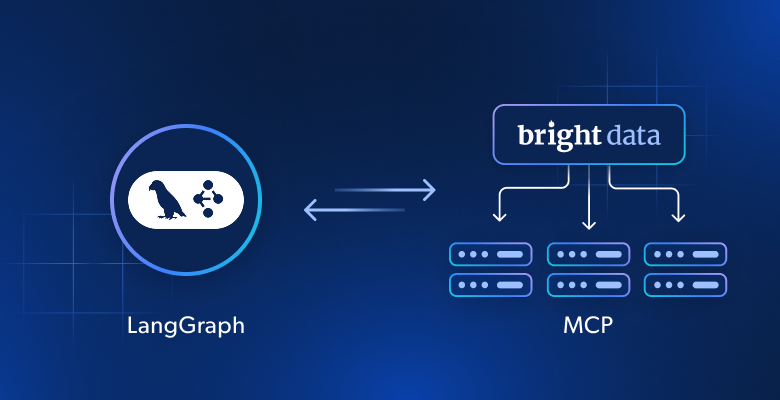In this article we will discuss:
Why localize?
The simple answer is that many eCom businesses feel that they have maximized their product niche locally. They are looking for new target audiences overseas so that they can grow their business globally. In fact, according to research conducted by Web Interpret, for every $1 you invest in localization, you can return up to $25.
 Image source: Bright Data
Image source: Bright DataIt seems like a pretty simple equation:
More target markets + a larger customer base + higher sales volume = increased profit margins
But it is not that simple, each region has its own unique:
- cultural preferences
- consumption patterns
- phrasing
- search terms/trends
- search ranking (search results and promoted links look different by region and language)
- ideal price points for a successful conversion
- design inclinations
- payment preferences
- Players /stakeholders/competitors
Data is enabling eCommerce businesses to follow regional consumer trends, collect real-time data, and implement a localized strategy.
Here’s how:
Trends taking shape in real-time
We are currently living in an age which many in the business world are dubbing ‘The Instant Economy’. This means consumers want what they want, as soon as possible (think of Amazon Prime, same-day shipping, on-demand t.v., food delivery services etc). This hunger for instant gratification has spilled over to all areas of life including online shopping behaviors.
 Image source: McKinsey & Company
Image source: McKinsey & CompanyMcKinsey, and Company’s recent survey, and report ‘The great consumer shift’, shows that 75% of online consumers have tried some new form of shopping behavior in the wake of COVID, ranging from
- new brands
- to new shopping methods (online, smartphones, new marketplaces).
This means that consumers are becoming increasingly more fluid in their shopping patterns, and product preferences. This is true in different markets across the globe.
Use case: How data is enabling retailers to profit from the facial hair grooming fad
New trends such as men becoming obsessed with facial hair grooming has created entirely new markets for eCommerce businesses. Those who are collecting data points on geography-based demand are able to adapt, and benefit most. Here is a look at some data-based insights:
- 40% of online grooming revenues come from Indian consumers
- 18.5% of all bath, and shower related products are sold to male consumers in Western Europe, the highest rate of any region globally
- 60% of male skin care consumers are from the Asia Pacific (APAC) region
- 34% of the market is dominated by shampoos going out to male customers in India, Brazil, and China
 Image source: Bit Rebels
Image source: Bit RebelsAccording to a Global Beard Care Market report published by Research, and Markets here are the top 3 vendor insights:
Insight 1: The Asia-Pacific (APAC) region will grow quickest as far as facial hair products based on consumption patterns, a young millennial population, and increase of ease in launching new products, and lines.
Insight 2: The top-5 most prominent facial hair product vendors in the APAC region include:
- Edgewell
- Honest Amish
- Wild Willies
- Smoky Mountain Beard Co.
- Beardoholic
Insight 3: Singapore, Thailand, and Malaysia will lead the APAC region in terms of growth in the male grooming market. Millennial consumers prefer oils, and serums over actual grooming products.
Collecting real-time data about consumers, regional brand/product preferences, behaviors, and current fads enables you to build a strategy that incorporates, responds, and embraces such trends. For example, you may choose to offer certain products in regions you never thought of appealing to, in age groups you thought irrelevant, offering free shipping in countries never on your radar, but with large consumer interest.
Design that resonates locally
Other areas of interest to digital retailers looking to expand globally include:
- Product design
- Advertisements
- Product listings
Different peoples have varying sensibilities, and tastes. The colors or form of a product’s design, the type of images used in an ad or item page can have a huge impact on whether or not you appeal to a local market, or remain on the sidelines. Collecting relevant data pertaining to user engagement, can help your team create visuals, user experiences, and an overall digital retail experience conducive to your regional sales goals.
Case study: Neeman Markus expanding into the Japanese market
 Image source: Bright Data
Image source: Bright DataNeeman Markus, the American fashion powerhouse, was looking to enter the Japanese market but was seeing low conversion rates. By analyzing user/consumer data, they were able to cater to local sensibilities, and dramatically expand their Japanese consumer base. Here is a sampling of the the types of data collection, and analyses they performed in order to achieve such spectacular results:
Customized marketing campaigns – By collecting data about other successful digital fashion retailers, Neeman Markus was able to discern what type of visuals, and special offers appealed to local customers. By aggregating and analyzing visual ad content, they were able to build their own localized ‘visual language’.
Catering to regional search/shopping trends– By collecting data about consumer preferences, and behavior on their own site as well as real-time search engine, and marketplace trends – they were able to train their site algorithm to visually display top-selling items.
Doing competitive landscaping– By collecting data on Japanese digital consumption preferences, and behaviors – they were able to deduce that local consumers had a clear preference for multi-channel shopping, and ease of access. Much like a shopping mall, Japanese consumers wanted to be able to easily browse multiple retail choices before making a decision. By tweaking the user experience through a small change in their footer design they incorporated quick links to other popular Japanese eCom sites. This insight, however counterintuitive, was partially responsible for an increase in consumer trust and ultimately improving their bottom line.
 Image source: Bright Data
Image source: Bright DataMapping the indigenous terrain
It is key to understand the landscape, and competitive context within which you wish to develop your standing as a business with local consumers. Many retailers will actually crawl local marketplaces using a local IP, and language settings, in order to identify products/vendors with high sales volume. This can help inform everything from production lines, and collections, to ensuring your sales strategy is in sync with current regional demand.
Lastly, it is important to understand the vernacular nuances of the peoples you wish to sell your goods to. The way in which the locals speak, and write is extremely important in terms of searchability, and findability. The modern consumers’ buying journey typically begins with a search engine query containing a keyword which you ideally want your product to rank for. Here is a good example of this:
Image source: Bright Data
As you can see, within the Anglo-speaking world there are many differences in the way Australian, American, South-African, and British consumers refer to, and search for identical products. Even for the same phrase – the results that appear in a search engine like Google, depend on the location the query is sent from and the language settings of the browser in question. That is why retailers looking to enable local customer to find their items through marketplace-native or search engine queries, are monitoring local keywords, and search trends from many locations, and implementing them in:
- Product/brand-focused blogs
- Product image alt-text
- Product listing descriptions
- E-store meta descriptions
The bottom line
The importance of localization, and why data collection is so integral to successfully marketing products to different nations with varying sensibilities, can be summed up with ASOS’s global strategy. Based on consumer engagement, user experience, web traffic, and shipping data, among others, ASOS has been able to create tailored, local experiences. As an exclusively online retail business, they have created 12 websites, altering special offers, payment methods (10 options), currency (19), and language based on user IP location, driving 149 % growth in sales over the last 5 years.
The ASOS case study shows the vast potential for brands who want to take a data-driven approach to global expansion, by creating local narratives interweaved with individual consumer preferences.








